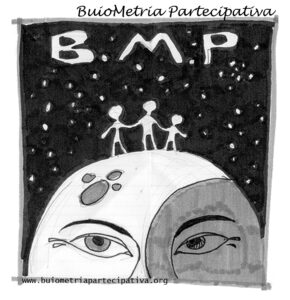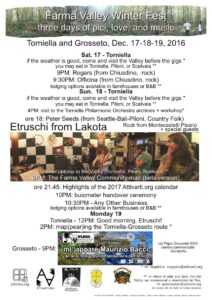The Jug Band Colline Metallifere goes North with the 2024 GRAN(i)TOUR!
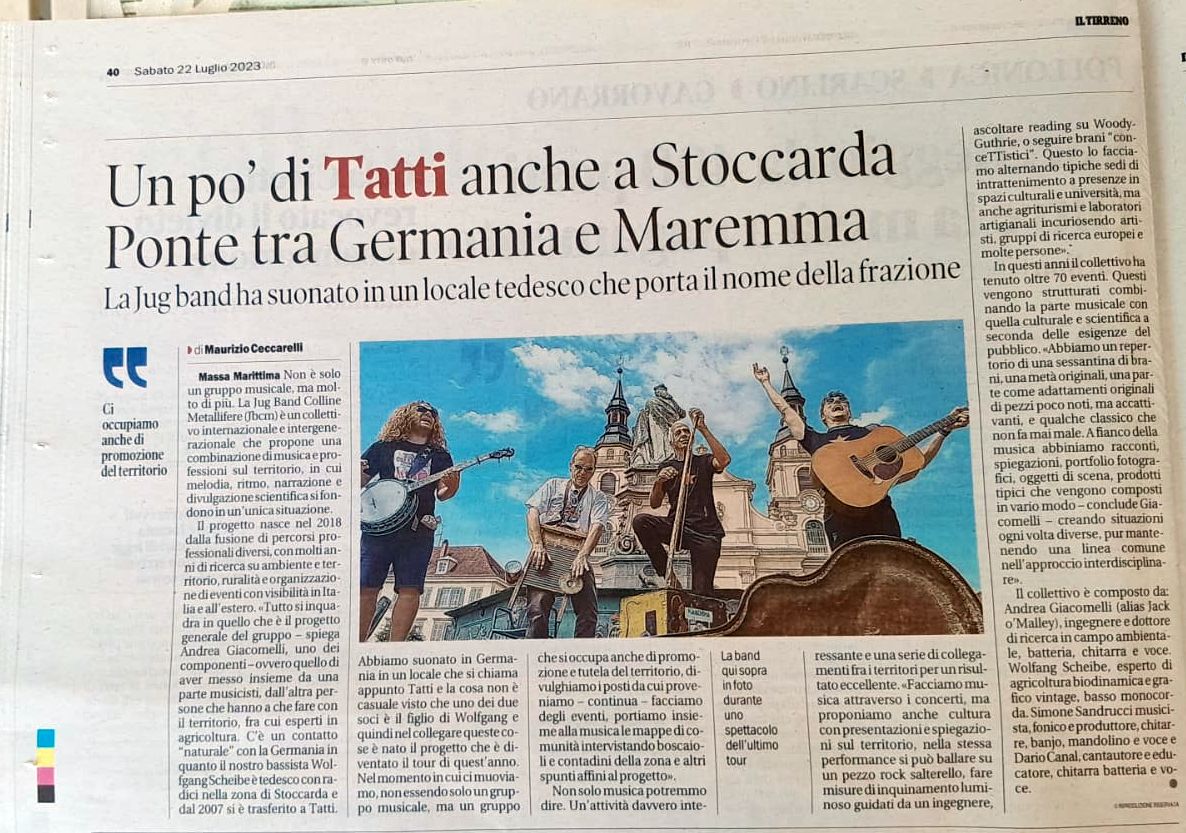
After the “Geomusical Tour” in 2019 and the “Brezel Tour” in 2023, the “GRAN(i)TOUR” with the Jug Band Colline Metallifere in 2024 is all about grains (Grani in Italian). At the bottom of this page you will find more articles about the development of this project.
The reason for the tour comes from two invitations at festivals in farms commemorating Rudolf Steiner’s answer to the farmers exactly 100 years ago and that point further into our future.
Our band is a music collective from three countries and three generations, based in the Colline Metallifere, the metalliferous hills of Tuscany. We have been working together since 2018. About half of our repertoire consists of our own songs on contemporary topics, all based on folk, blues and rock, and we also play some of the classics in our own interpretation.
In addition to the music, our passions always play a role in our shows: environmental issues, stories about our land, anecdotes about agriculture, and more incredibly strange facts. We do have recorded material, but our strength is live performances, and “Musica&Territorio!” is our motto.
In the photo from left to right:
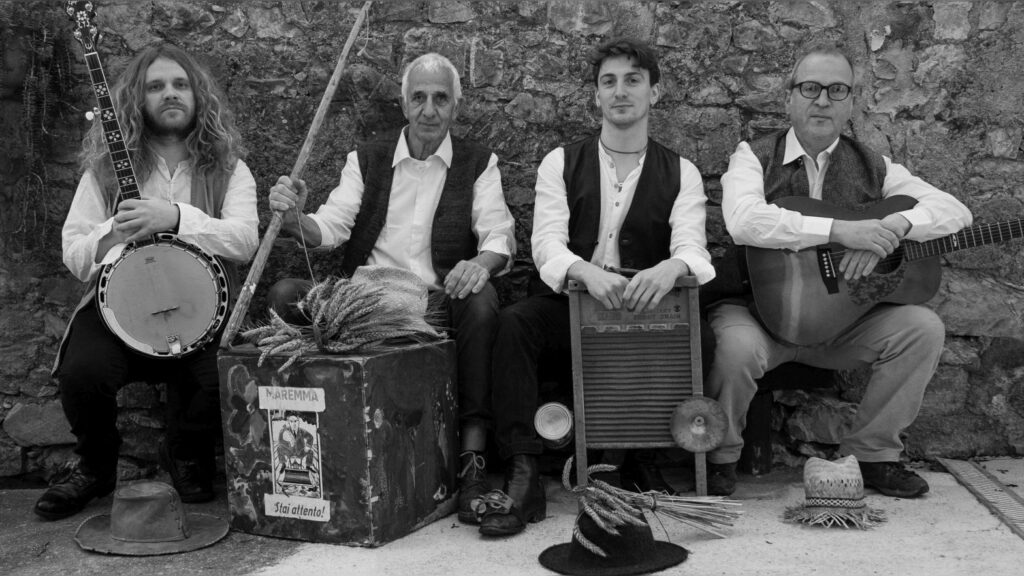
- Simone Sandrucci – recording studio expert and music teacher, vocals, guitar, banjo, mandolin
- Wolfgang Scheibe – ex-typesetter with a small printing workshop, long-time biodynamic farmer consultant, one-string bass
- Dario Canal – educator, songwriter, vocals, guitar, harmonica, washboard, percussion
- Andrea Giacomelli (aka Jack O’Malley) – Environmental engineer, songwriter, vocals, guitar, percussion
(photo credits: Romina Zago)
The GRAN(i)TOUR 2024 will take us from Maremma to Trentino, Munich and the Black Forest, Stuttgart and Ludwigsburg and the Hohenlohe region. We will be on the road from June 14 to June 30, and then back to Tuscany for more Summer gigs.
The tour is co-sponsored by
Follow us on www.jugbandcm.it or Instagram @jugbandcm.
For more information and booking: jugbandcm@pibinko.org or +393317539228.
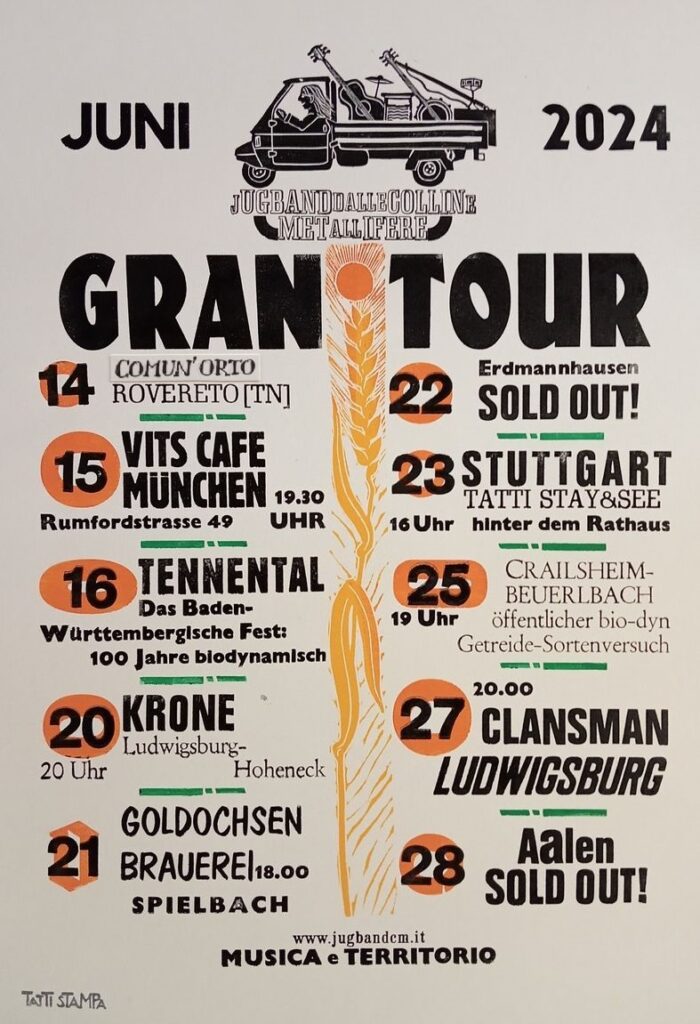
- Follow us on www.jugbandcm.it or Instagram @jugbandcm.
- If you would like to co-sponsor the project: https://www.pibinko.org/support/
- For more information and booking: jugbandcm@pibinko.org or +393317539228.
 The Gran(i)Tour is advertised by the Institute of Italian Culture in Stuttgart
The Gran(i)Tour is advertised by the Institute of Italian Culture in Stuttgart- Wolfgang’s Wheat as of April 26, 2024
- Tatti Twist – Jug Band Colline Metallifere – Teaser #1
- Tatti Twist – Jug Band Colline Metallifere – Teaser # 2
 Apr. 29, 2024 – The Gran(i)Tour featured by “Poveri ma Belli” (Radio Popolare Milano)
Apr. 29, 2024 – The Gran(i)Tour featured by “Poveri ma Belli” (Radio Popolare Milano) To Friends in Bayern and Baden-Württemberg (and surroundings)…
To Friends in Bayern and Baden-Württemberg (and surroundings)…- Alone, in a Group, or with your Horse: so the Twist becomes Joy without Borders (Il Tirreno, Grosseto edition)
 What Wheat will we Display with the Gran(i)Tour?
What Wheat will we Display with the Gran(i)Tour? Tatti Twist / Jug Band Colline Metallifere
Tatti Twist / Jug Band Colline Metallifere The recording of the #221 show featuring the Jug Band Colline Metallifere (May 21, 2024)
The recording of the #221 show featuring the Jug Band Colline Metallifere (May 21, 2024) June 16, 2024 – Jug Band Colline Metallifere live in Tennental with the Gran(i)Tour
June 16, 2024 – Jug Band Colline Metallifere live in Tennental with the Gran(i)Tour The Gran(i)Tour T-shirt pre-orders are open
The Gran(i)Tour T-shirt pre-orders are open Order now your Gran(i)Tour 2024 T-shirt!
Order now your Gran(i)Tour 2024 T-shirt! June 25, 2024 – Gran(i)Tour in Beuerlbach, with a visit to grain experiments + Jug Band Colline Metallifere live
June 25, 2024 – Gran(i)Tour in Beuerlbach, with a visit to grain experiments + Jug Band Colline Metallifere live The Forestano Session EP is out, to warm up before the Gran(i)Tour
The Forestano Session EP is out, to warm up before the Gran(i)Tour- June 25, 2024 Blues und Rock aus Toskana (Hohenloher Tagblatt)
 May 21, 2024: The Jug Band Colline Metallifere on TV9
May 21, 2024: The Jug Band Colline Metallifere on TV9 The Jug Band Colline Metallifere Gran(i)Tour: how did it go?
The Jug Band Colline Metallifere Gran(i)Tour: how did it go? Gran(i)Tour 2024: The Interactive Map
Gran(i)Tour 2024: The Interactive Map Wolfgang’s Wheat as of May 23, 2024
Wolfgang’s Wheat as of May 23, 2024
- On foot in the “Far West”: Culinary Itineraries in Maremma
- Cena da noi @ Azienda Agricola Foradori (Trento), Apr. 4 2025
- The Ancient Game of Palla Eh! meets the Canary Islands in Gavorrano (Southern Tuscany)
- The Jug Band Colline Metallifere Forestano Session is now available “on the platforms”
- The Openlime library is available
- Ixtlan Agricamping in Tatti (Southern Tuscany) reopening on April 15
- Apr. 1, 2025 – Alessandro “Asso” Stefana in Tatti (Southern Tuscany)
- Bandabardò – Fandango – European Tour 2025
- The Little Fable Workshop where Printing Challenges Time (Il Tirreno ed. Grosseto Mar. 15, 2025)
- March 16, 2025: Open Doors at Tattistampa, Southern Tuscany, for the International Art Print Day
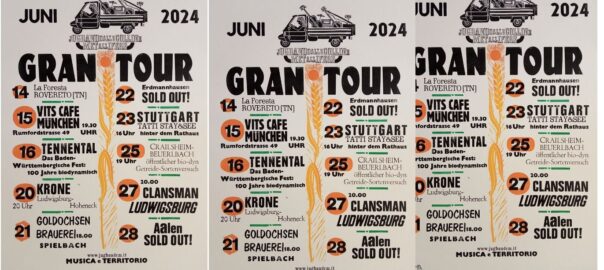
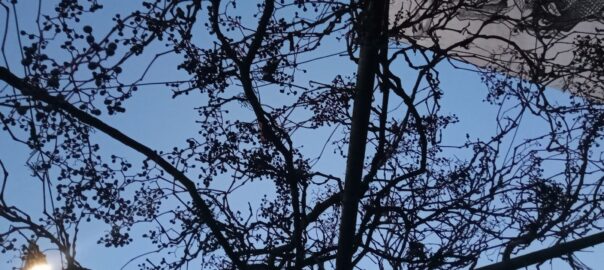
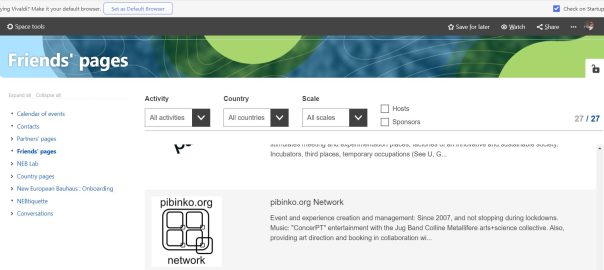
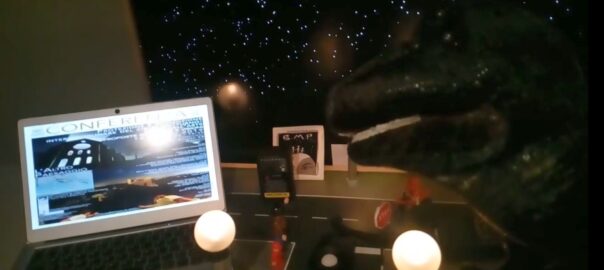
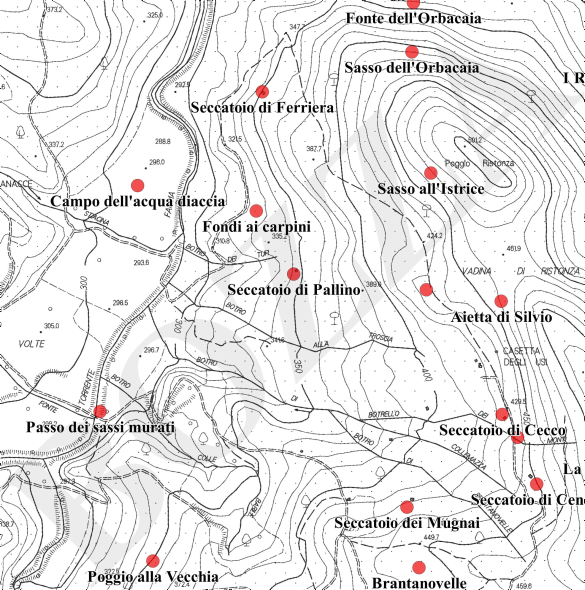 The Farma Valley Community Map was created by using as a base map the current Tuscan administration official base maps (1:10000 scale), interviewing the elders of the three villages (Torniella, Piloni, and Scalvaia), in order to document points of interest and other information which does not exist in the official maps, but is relevant for the locals.
The Farma Valley Community Map was created by using as a base map the current Tuscan administration official base maps (1:10000 scale), interviewing the elders of the three villages (Torniella, Piloni, and Scalvaia), in order to document points of interest and other information which does not exist in the official maps, but is relevant for the locals.